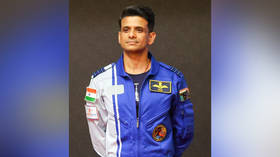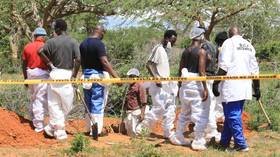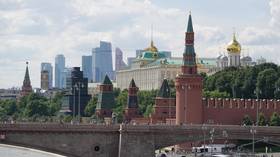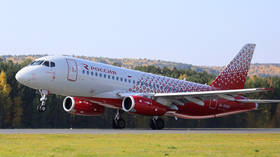India to send its second-ever astronaut to ISS

India has announced that it will send an astronaut to space next month for the first time in 40 years. The last Indian to enter outer space was Rakesh Sharma in 1984, in a flight aboard a Soviet Soyuz spacecraft.
Group Captain Shubhanshu Shukla of the Indian Air Force will fly to the International Space Station (ISS) in May as part of the Axiom-4 mission, a private spaceflight operated by Axiom Space in partnership with SpaceX and NASA, the Indian Department of Space announced.
Shukla is one of four astronauts selected last year for the South Asian nation’s Gaganyaan program, which aims to send India’s first astronauts into space aboard a crewed vehicle. The announcement was made following a top-level meeting to discuss the plans of the Indian Space Research Organization (ISRO) on Friday.
Shukla will be the first Indian to visit the ISS and the first Indian astronaut to travel to space in over four decades, the statement noted.
Shukla’s Axiom-4 mission is anticipated to offer valuable hands-on experience in various aspects of space travel, including spaceflight operations, launch protocols, adapting to microgravity, and emergency preparedness, all of which are crucial for India’s plans to send crewed missions to space, the statement noted.
“India is ready for its next space milestone,” said Jitendra Singh, minister of state (independent charge) for science and technology. He noted that collaboration with international partners and the strategic momentum of projects like Gaganyaan reflect India’s commitment to becoming a global leader in space technology.
India has made strides with its Gaganyaan mission in recent months. Last year, ISRO began assembling the Human Rated Launch Vehicle Mark-3 (HLVM3) for Gaganyaan’s first uncrewed flight. In January, the agency successfully conducted an unmanned docking, setting the stage for its own space station development.
In the coming months, the space agency will conduct the Test Vehicle-D2 (TV-D2) mission, a critical test designed to simulate an emergency abort scenario and demonstrate the effectiveness of the Gaganyaan crew escape system. The mission will also include a sea recovery operation for the Crew Module, rehearsing the procedures that will be used for India’s inaugural human spaceflight, said Singh.
New Delhi has also revealed plans for a slew of new space mission launches, including the PSLV-C61 mission, which will carry the EOS-09 satellite equipped with a C-band synthetic aperture radar. In June, ISRO will launch the NISAR satellite aboard the GSLV-F16. Additionally, in July, ISRO will launch the BlueBird Block-2 satellites of US-based AST SpaceMobile Inc. into orbit via the heavy-lift LVM-3 rocket.













